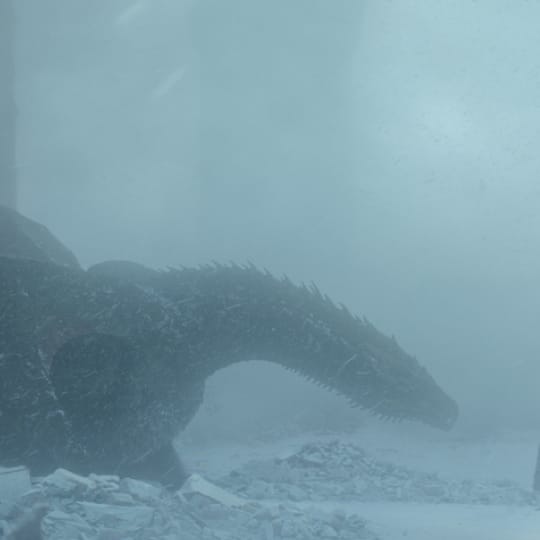Scanline's Mohsen Mousavi on how V-Ray for 3ds Max helped him adopt dragons, melt metal and build-then-destroy a city for Game of Thrones' explosive finale.
It's over. After 73 episodes of countless plot twists, betrayals, revelations and shocking acts of violence, HBO's adaptation of George RR Martin's epic fantasy novels finally came to a dramatic close earlier this year with series 8. In its eight years on-air, Game of Thrones went from a cult series to a blockbuster franchise, with fans spending millions on merchandise — and even traveling to Ireland and Croatia to visit some of the now-legendary locations.
One of the secrets of its phenomenal success is the way it grounded high fantasy in a relatable reality. Key to this is the show's visual effects, which have been used judiciously alongside practical elements to extend environments and convince the audience that dragons and giants are real.
To create the effects, the show's producers used a roster of visual effects companies, some of whom — Iloura, Elastic, Pixomondo — make use of V-Ray to render stunning visuals. New to Game of Thrones for the final three episodes of series 8 was Scanline VFX, the V-Ray for 3ds Max-based visual effects house best known for unleashing destruction on the big screen via The Meg, San Andreas and Independence Day: Resurgence to name a few.
Six months ago today, the final episode aired. We look back on the explosive final season with VFX Supervisor, Mohsen Mousavi, to learn about how Scanline VFX tackled the effects — and affects — of Game of Thrones.
Spoiler alert!
Game of Thrones has been off-the-air for a little while — long enough, hopefully, to ensure that everyone's caught up with the cataclysmic events of the final series. But if you're in the small minority of Thronees-to-be, and you're yet to tackle series 8, be warned that this article contains gargantuan spoilers. In fact, spoilers were even an issue for Mohsen and his Game of Thrones-obsessed crew.
"When we started doing the season eight, we had two groups of people in the company," explains Mohsen. "One group of artists came to me and the management, and they really, really wanted to make sure that they were involved — whatever it took. Then we had a second group that approached us and said they really, really wanted to make sure that they were not involved because they were such great fans and didn't want to have any spoilers."
Melting the Iron Throne
For seven seasons, the residents of Westeros fought a vicious battle over the Iron Throne, but in the final episode, the all-important spiky seat was effortlessly reduced to molten metal by Drogon. To create a believable simulation for this iconic moment, Scanline VFX custom-rolled its own Flowline fluid effects software with Houdini's latest solvers.
Joe Bauer, HBO's Visual Effects Supervisor, approaches all visual effects as if they were shot in-camera — and the throne melt was no exception. The Scanline team decided to do one long simulation that could be filmed from all angles, with shapes tailored to particular compositions on a per-shot basis.
"We drew little drawings of curves, showed them to the HBO team, and asked: ‘Is that the right shape? Is that the target of the throne melt at the end of this shot?’” explains Mohsen. "They would sign off and we would go back and check those curves, and convert them into curves in our pipeline, and use that to drive where all of the tentacles of this melting throne would go by the end of the shot."
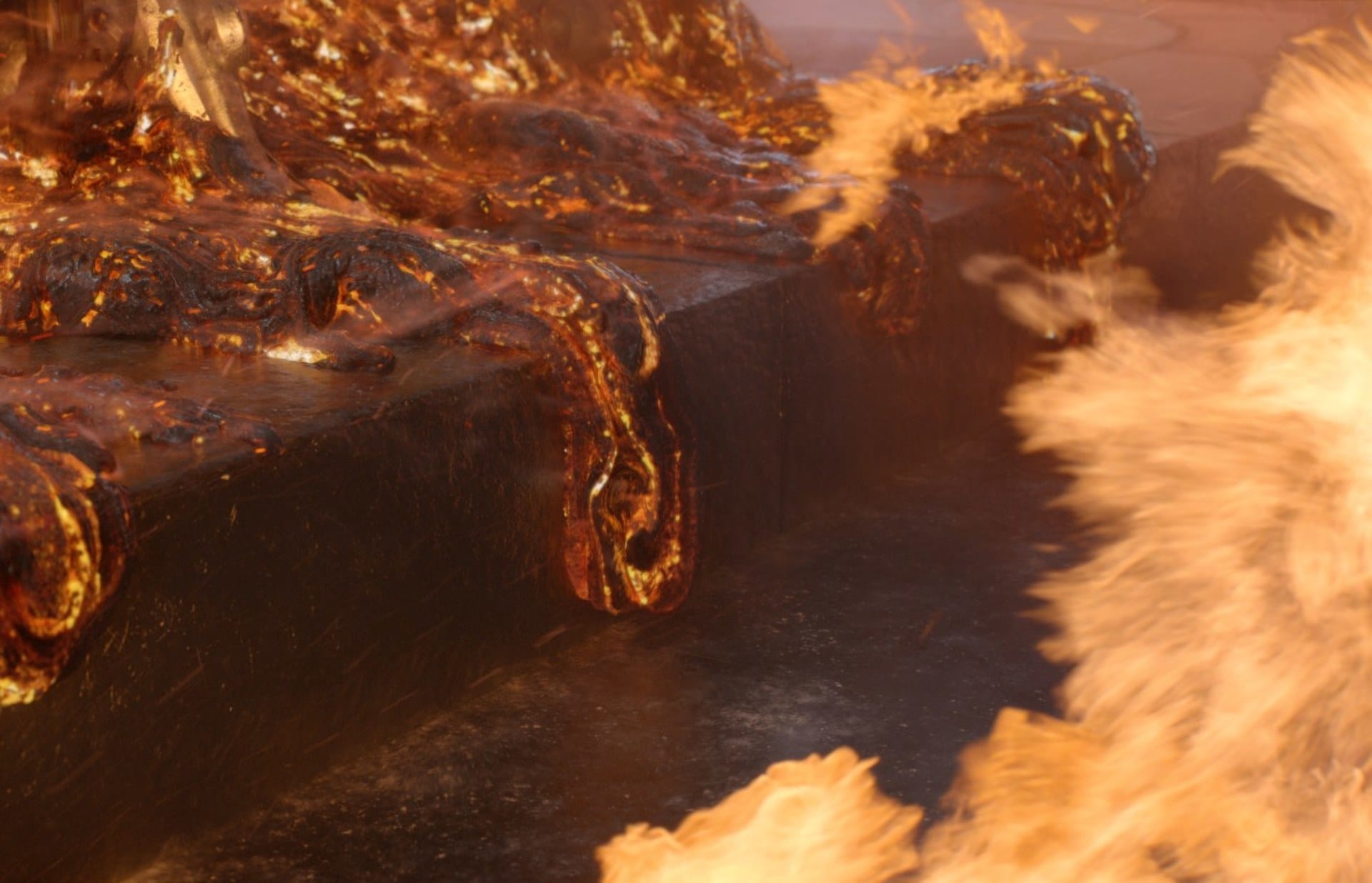
Surprisingly, molten metal isn't a common visual effect, so Mohsen turned to real-world reference of melting lava and stones. High resolution turned out to be the key to a good-looking melt, so the team developed shading in V-Ray with a high-resolution simulation as a base — and extreme amounts of procedurally generated detail on top, which could be changed quickly.
The question of why Drogon melted the throne remains a hot topic to this day. Mohsen has his own thoughts: "We didn't have the audio at the time that we were looking at it, but my feeling was that it looked like that he is doing this out of rage. He's an intelligent creature, he understood the purpose of the throne, and what caused Dany to go all the way from the world she came from, to end up sitting on that throne. And ultimately, that's what really killed her."
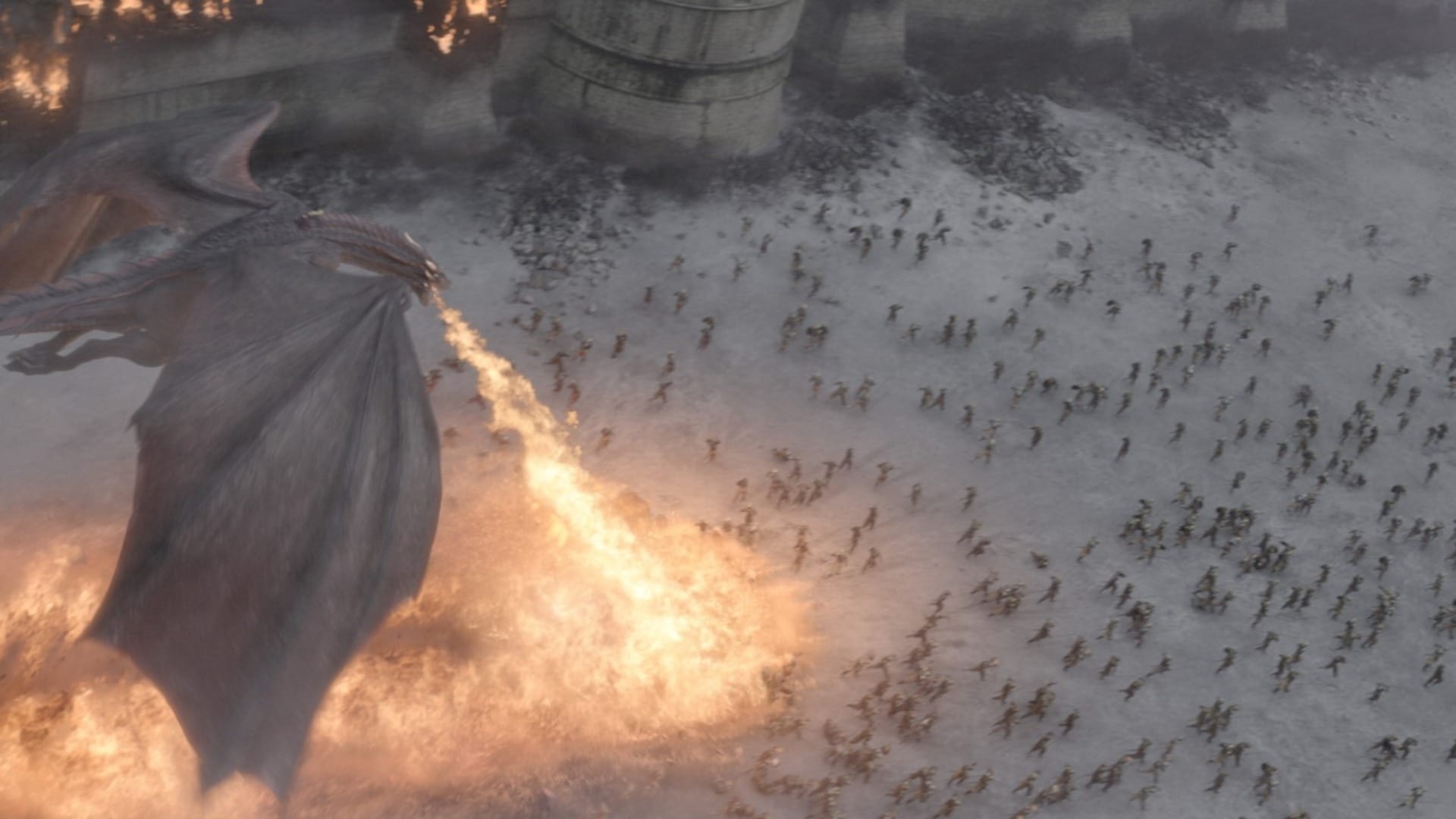
Playing with (real) fire
Game of Thrones has always relied on practical elements wherever possible — even when it comes to the scorching-hot pyrotechnics yodeled by the series' dragons. More often than not, the onscreen flames are real, generated from a motion-controlled Technocrane-mounted flamethrower spitting out high-pressure flaming oil, which is filmed and precisely composited onto CG or live-action footage.
This incredibly dangerous-sounding setup ensured that the fiery emissions were physically correct and unique for every shot, and it was even used in the throne-melting sequence. But there were occasions where Mohsen and his team would have to step in.
"In some shots, the dragon would fly up fast and that would be hard to do on set, so we would do that in CG," he explains. "Or in the throne-melt room, a lot of the fire that you see is practical, but the fire was supposed to interact with the wall and the throne, so we had to very cleverly combine them with an additional simulation that wraps around the throne and the wall."
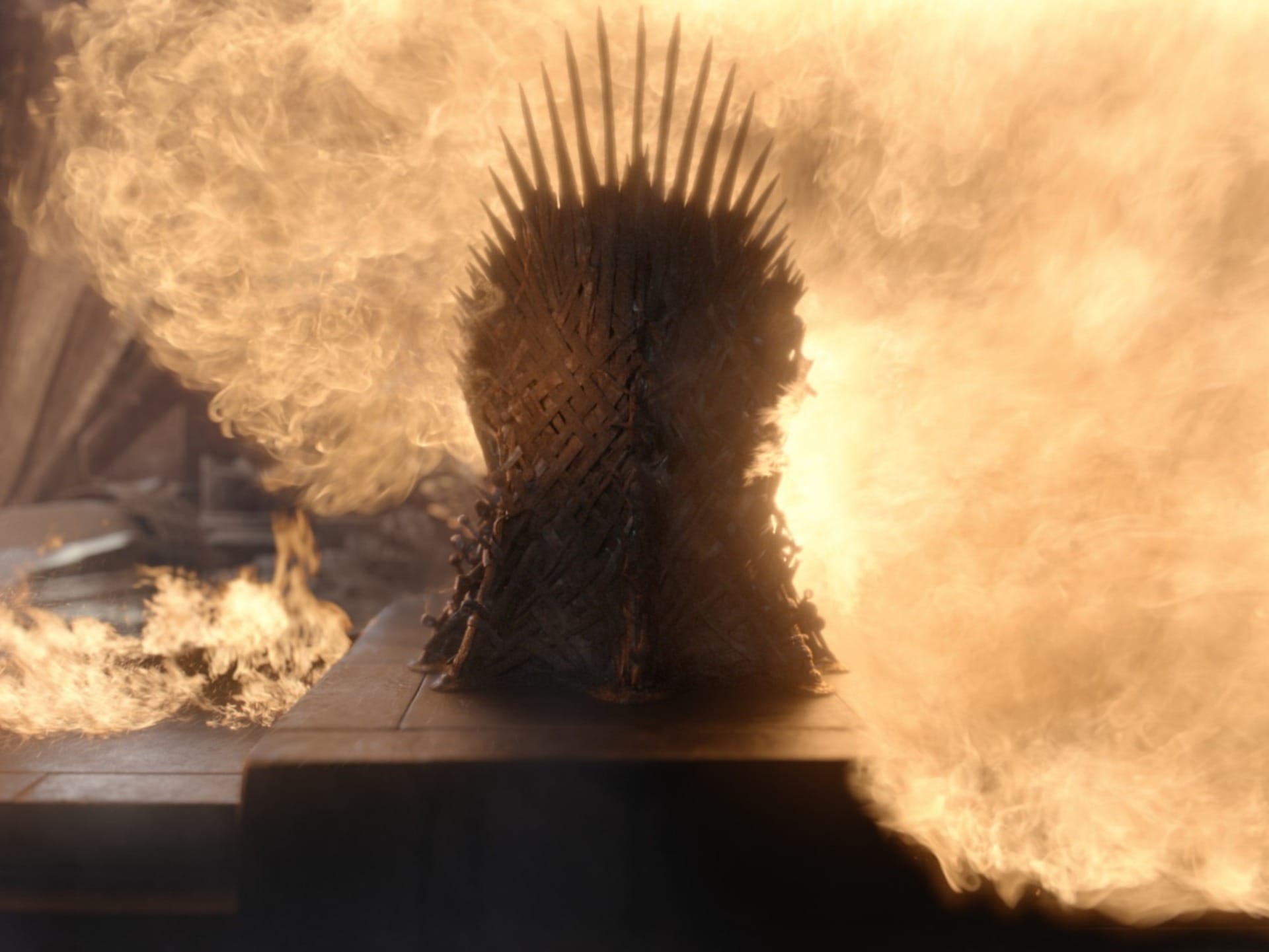
Although using real effects guarantees a level of realism, it also meant Mohsen and his team had to ensure CG elements didn't stand out. "If you have a lot of practical elements and you're adding CG on top, it's much harder because you need to match it one-to-one. And if there was a full-CG shot in the middle of the sequence, it had to look exactly like the practical ones around it, and that made it hard."
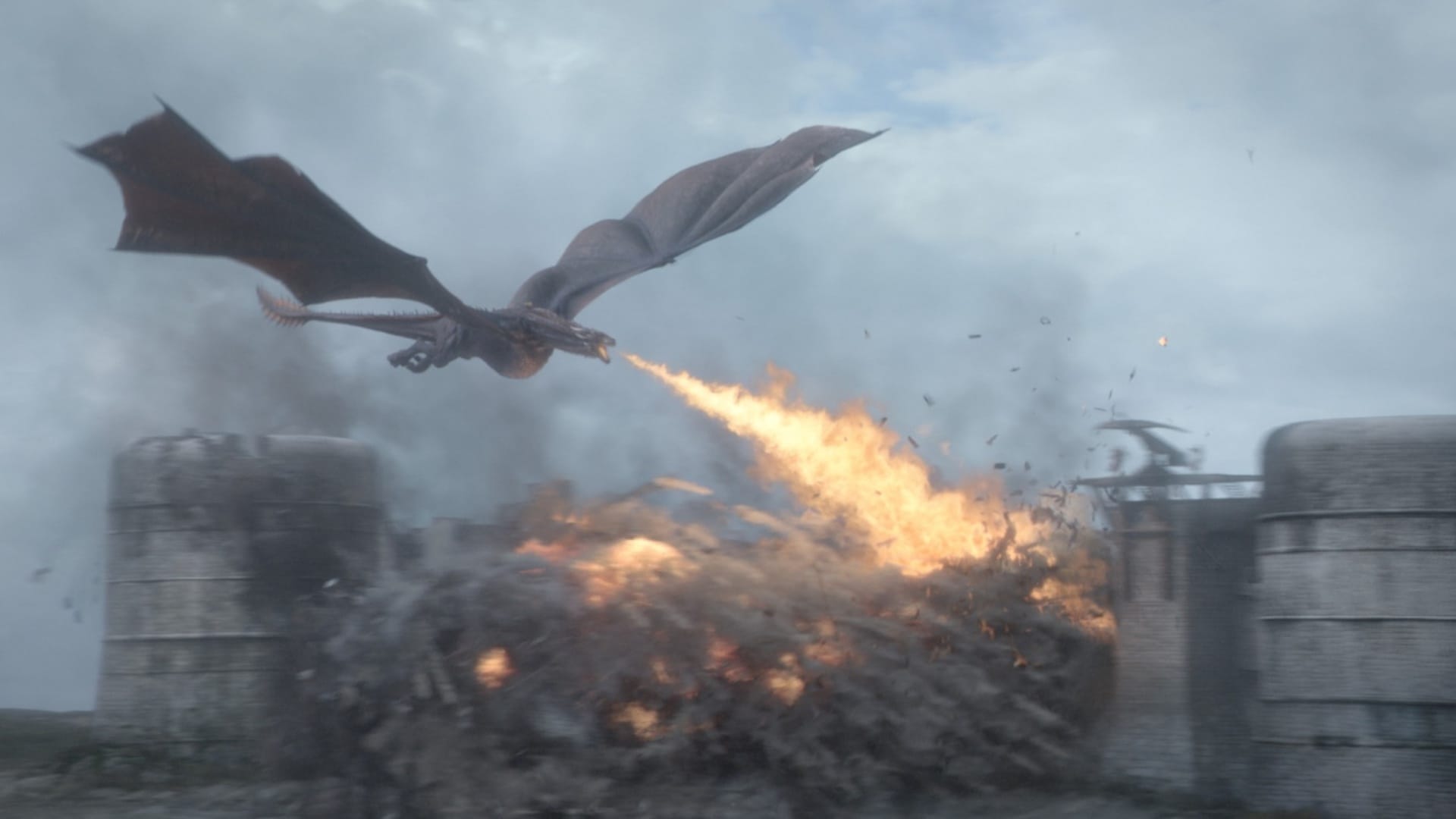
Adopting Drogon
The Game of Thrones audience has watched Drogon grow from egg to hatchling to fire-breathing monstrosity — and its ownership has passed around numerous VFX vendors, including BlueBolt, Pixomondo, Rhythm and Hues, and up to Third Floor and Image Engine in series 7. For the final series, Image Engine continued to provide most of the animation for the winged beast, but Scanline VFX took over the rendering. This unusual move allowed each company to concentrate on a particular element.
"It made sense for them to use the same vendor who was doing the animation for the past two seasons, so we're not going into back-and-forth iterations to make sure that our animation is the same as the previous seasons. Image Engine had developed a body language over the years. Working like this ensured we could focus on everything they hadn’t done before, like building King's Landing entirely in 3D."
To keep the series continuity, Scanline had to accurately copy the look of a creature customized on every step of its journey from vendor to vendor. HBO presented Mohsen and his team with a couple of shots from the Loot Train sequence in series 7 and asked them to replicate the dragon down to every last scale.
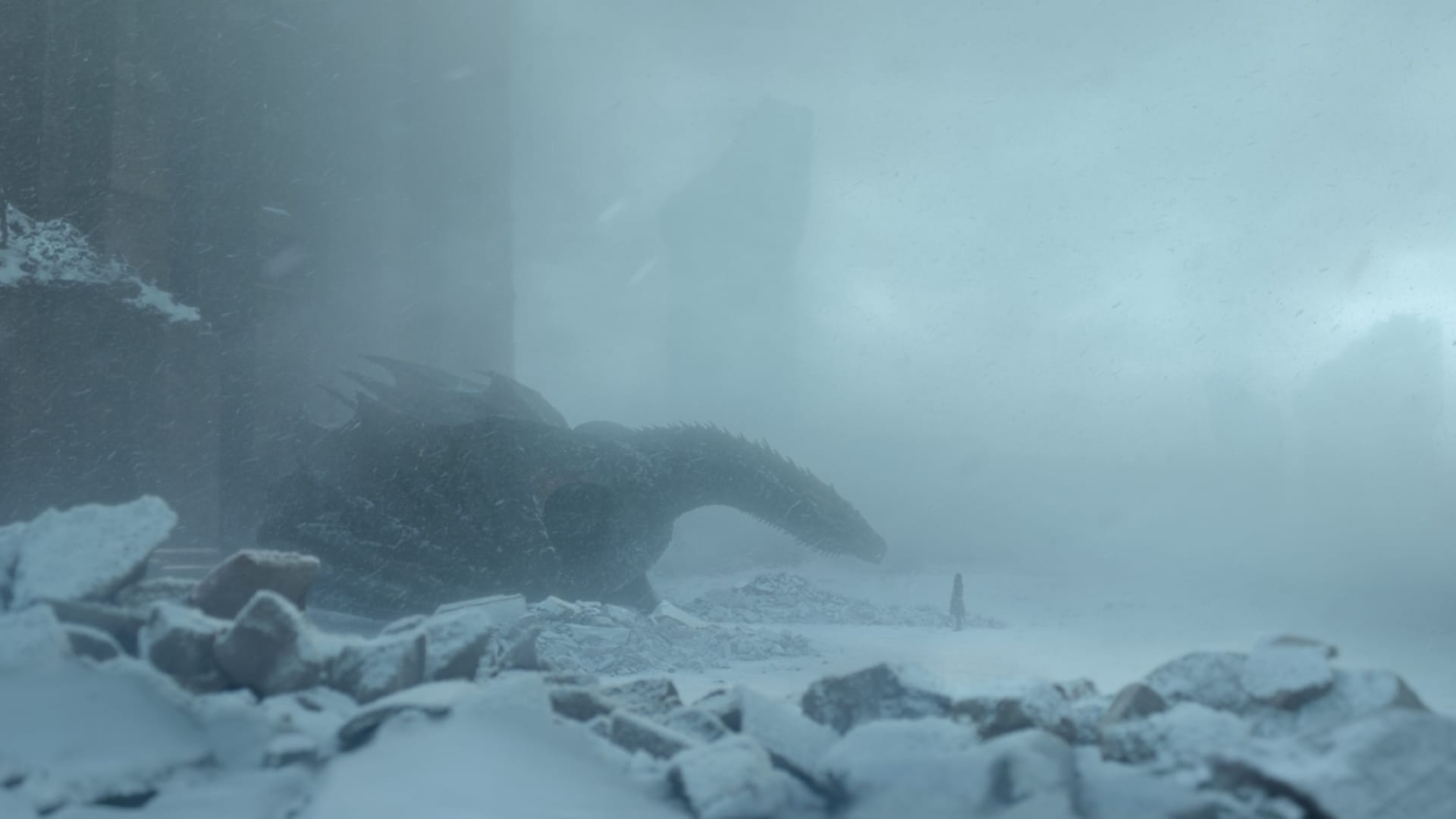
"We had the shots and we had the model, and the idea was that we would show them a render and a comp that would be identical to those two shots," says Mohsen. "It sounded straightforward! But once we started to link up all of this material, we realized that a lot needed to happen because other vendors had partially tweaked the textures and we didn't have the full history of it. And our pipeline was very different; we used a lot of in-house shaders in V-Ray."
Rather than working with the package they'd adopted, Scanline decided to use it as a reference and create its own materials for Drogon. After poring over the images and its version side-by-side, Scanline created a dragon which satisfied HBO.
"We got to the point where we sent the comp and they couldn't tell the difference," explains Mohsen. "It was an exact match, in terms of specularity and displacement, to the previous season. Once we had it, we got most of the animation as Alembic caches from Image Engine with a few from Pixomondo. We would bring it into our pipeline, and then we would replace that cache with our assets. We also created 20 animation shots within Scanline, which required a fully functional rig with dynamic muscles, simulated muscles and cloth on top."
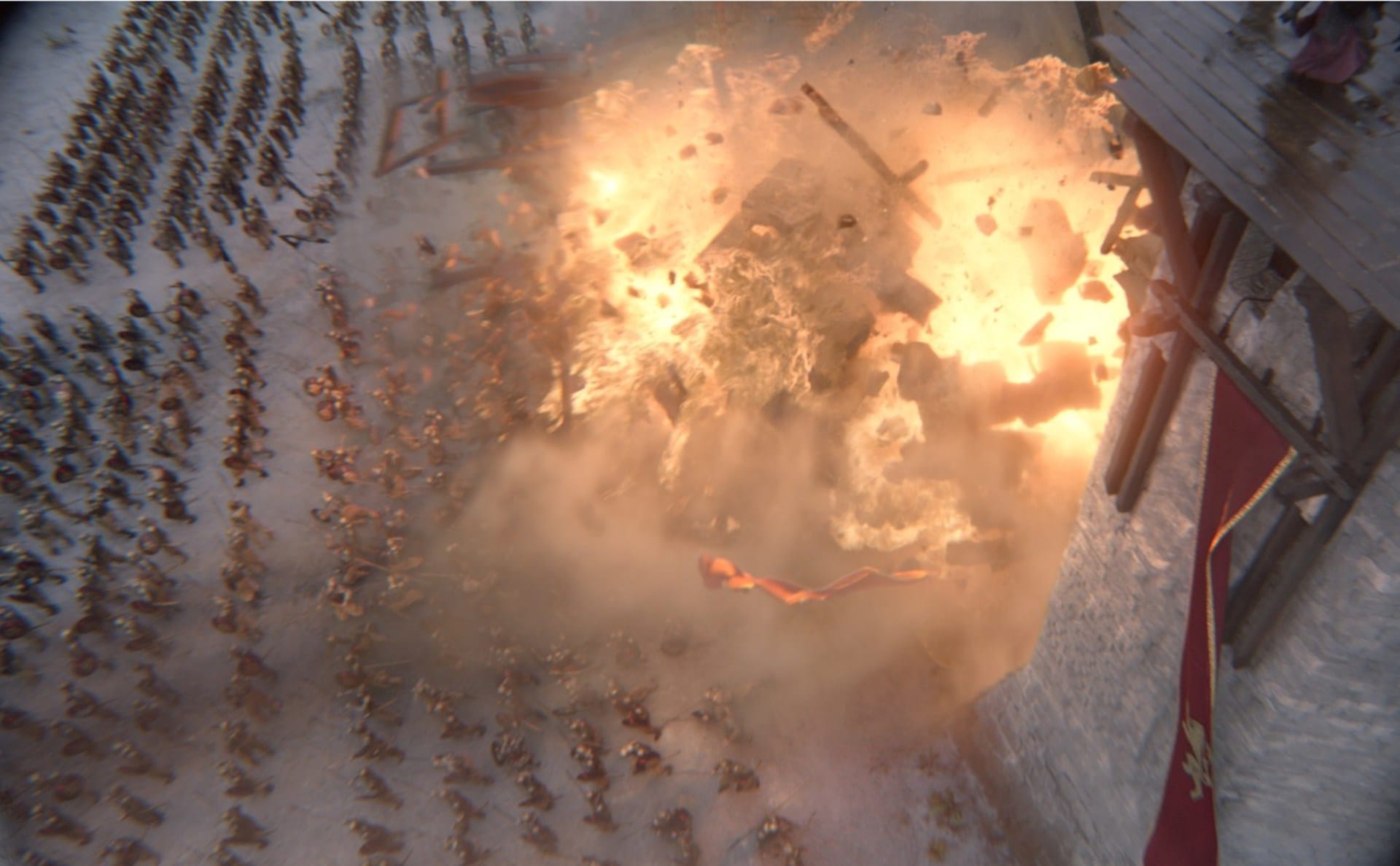
Destroying King's Landing
Since episode 1, King's Landing has served as the capital of Westeros and the backdrop for some of the show's most dramatic moments. At the end of the series, Daenerys and Drogon indiscriminately decimate the city. While the Croatian city of Dubrovnik has doubled for King's Landing since series 2, for series 8 the crew built a physical facsimile in Belfast, Ireland — so they could blow it up without destroying a UNESCO World Heritage Site. The same applied to Scanline, which was tasked with the CG destruction of the medieval metropolis.
"The crew went and scanned the entire center of Dubrovnik," recalls Mohsen. "It was one of the most amazing sets I've ever seen. The scope and the size of it was humongous, and we got all of this data with photogrammetry. Sometimes we were lucky and they shot on a day that wasn't sunny so we could use the textures directly, but some of them were very messed up with the sun and the shadows."
To build the whole city, Scanline leveraged the workflows they'd developed for the big-screen CG cities San Andreas and Independence Day: Resurgence. Working from the Dubrovnik scan, the team developed a procedural workflow and built a lot of small modules of elements such as bricks, windows, doors, shingles and facades.

"We improved the system for Game of Thrones," explains Mohsen. "We put together a city which had hundreds of thousands of buildings, with a mixture of photogrammetry for the background, plus a lot of highly detailed buildings that were done semi-procedurally. We were not copying and pasting the same building. It had to look very real and very different."
The technology which built the city was also used to destroy it. The crew could take an intact building, then run collapsing simulations, and then augmented these with damage modules. Although it took more time than a conventional and more manual approach, the procedural system gave Scanline an unprecedented amount of flexibility.
"It didn't matter where the camera was; our data set was so detailed that we could go into any shot and have a high-detail level of assets," says Mohsen. "Scanline excels at destruction and effects, and fire and smoke. It was easy to take all of that and run simulations. That almost came for free at the end, because we had it all planned and in place."
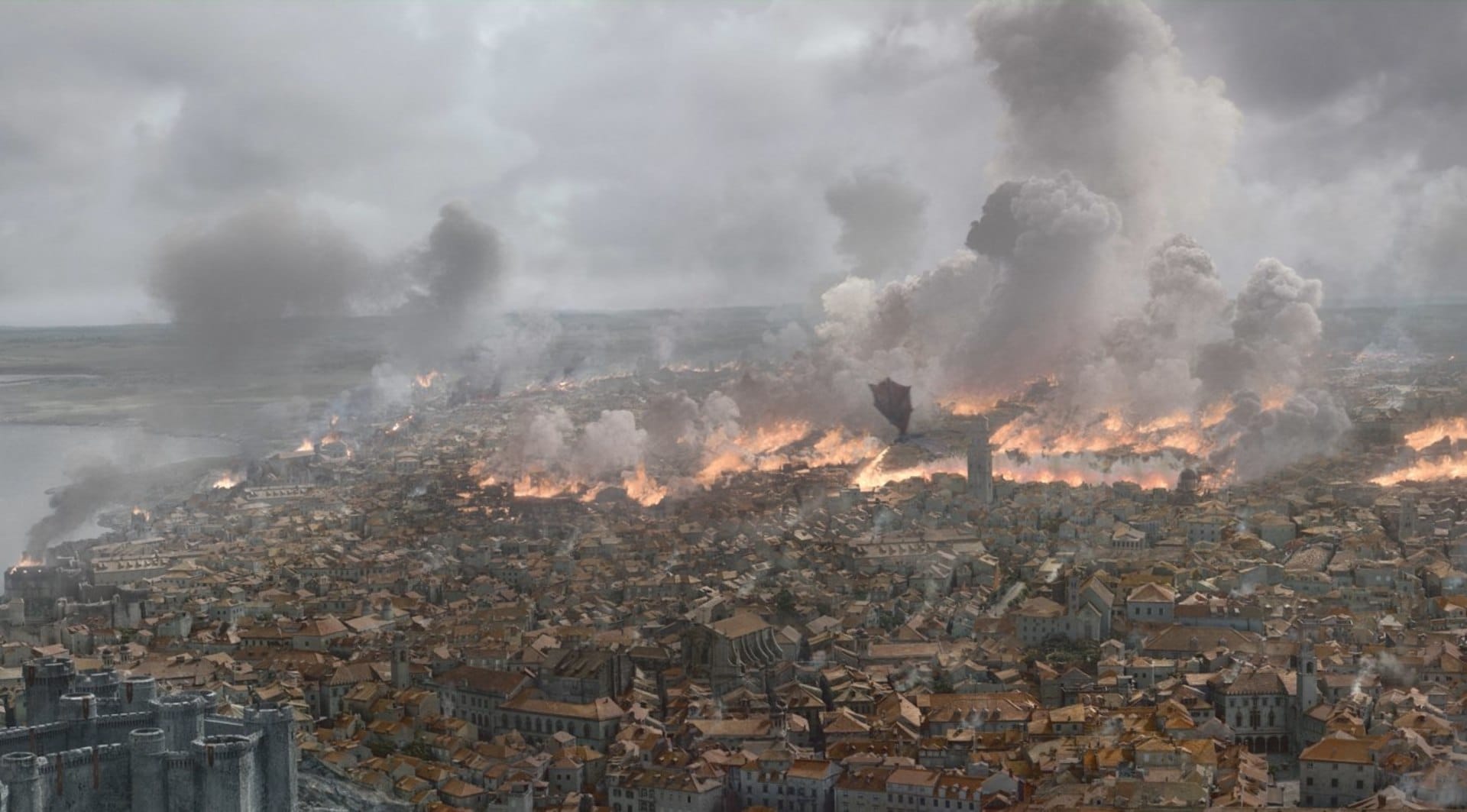
An excellent example of the versatility of Scanline's approach comes in the shot where Cersei surveys the extent of the damage Daenerys has unleashed. After trying to approach this the traditional way, Mohsen realized the Scanline library simply wasn't big enough to show the scope of the destruction without obvious repetition of fire elements.
It was one of the highest res simulations we have done — all of it is one massive simulation. Every house, every street! This gave us the option of keeping it consistent across the board on different shots with varying angles.
Mohsen Mousavi, Scanline VFX
"We ended up simulating the entire city with actual fire," he explains. "It's not elements of fire, copy, pasted and comped, what you would usually do, it's actually simulated in the shot for the entire city. It was one of the highest res simulations we have done — all of it is one massive simulation. Every house, every street! This gave us the option of keeping it consistent across the board on different shots with varying angles."
V-Ray and Scanline: A match made in Westeros
The relationship between Chaos Group and Scanline VFX goes back a long way. Scanline has tightly integrated V-Ray for 3ds Max into its pipeline, developing its in-house shaders specifically for the software and contacting Chaos Group to get custom-made nightly builds to tackle particular challenges. But V-Ray also proved critical in the creation and destruction of King's Landing.
"If I'm looking at a King's Landing shot, I literally have a hundred thousand buildings in there," says Mohsen. "Once you're looking at this city, we were able to leverage V-Ray delayed mesh load or V-Ray instances, but our own implementation of it using V-Ray API to pipe that into our procedural building.
"When you load this city, you're only loading every module once, so if a window is used a million times in the city, it's only loaded once. Years ago we worked on environments where we didn't have that option and it would be a huge bottleneck. V-Ray gave us a boost in being able to manage these huge data sets."
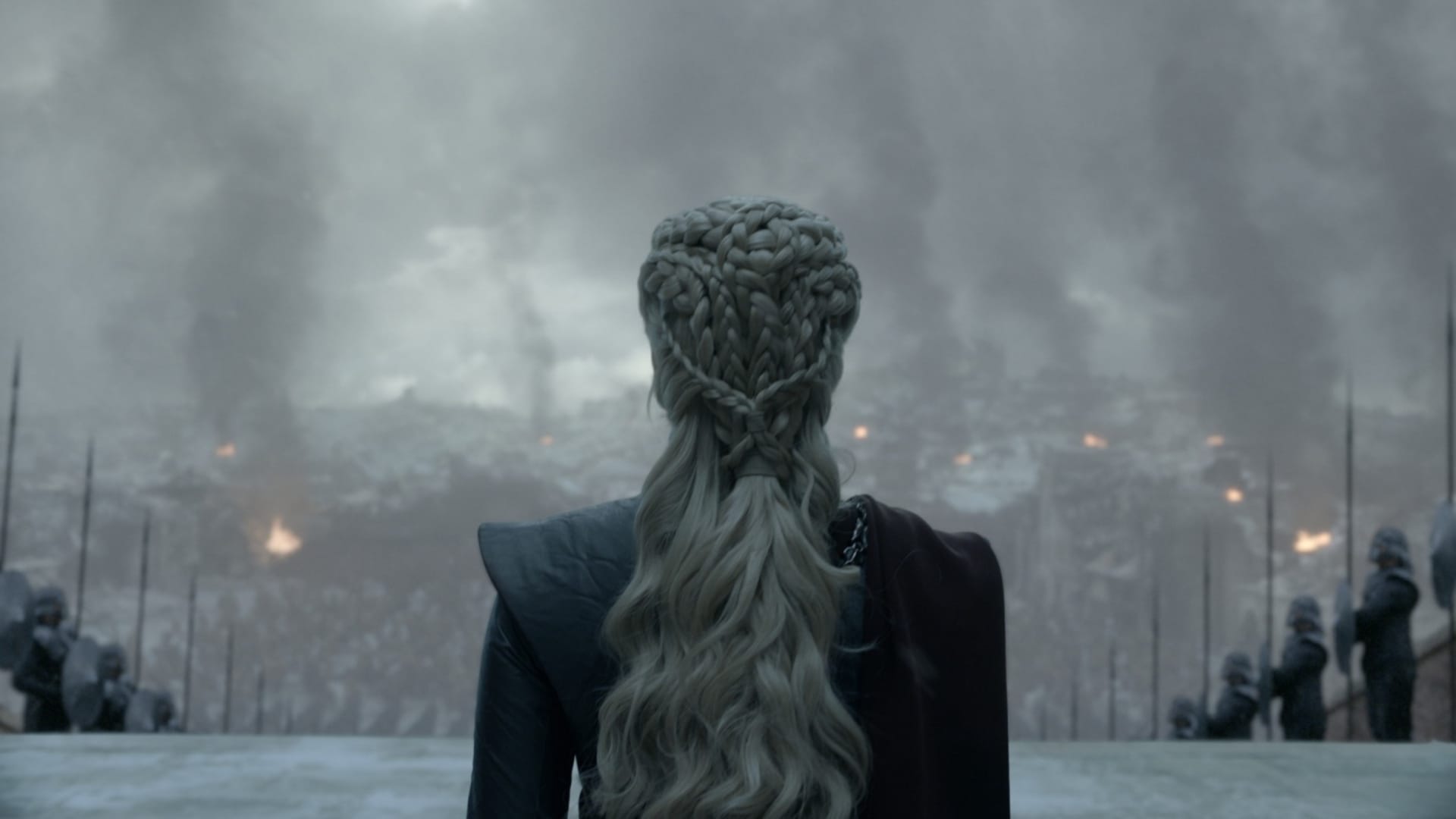
The end
Game of Thrones' triumphant finale attracted an incredible 19.3 million viewers on HBO's American platforms alone. While the conclusion may have divided the audience and critics, no-one could argue against the cinematic fidelity of the visual effects and overall look of the show. Mohsen and his crew's initial excitement about working on one of the biggest shows — and cultural events — in the world didn't dissipate, either.
"It was surreal to work on it in the first place," he says. "There was this crazy amount of anticipation and buzz around it. I think the best thing was that it didn't come out all at once. Usually, you go to the theatre, you watch your work and you're done. But we were waiting to see our stuff on the show — and seeing it and the buzz around it. That culture was new to us."
The crew was so passionate about the show that they came into the office on weekends to make good shots better, without being asked. But for Mohsen, one particular moment stood out in their epic Game of Thrones adventure:
"When we got the first official edit of Dany's death sequence, we watched it with some big fans on the production side — and they had tears in their eyes," Mohsen recalls. "They got so emotional knowing what was going to happen. Even though it had no sound, and it was all green, just watching the edit still had a big impact on them."
Have a burning desire to create GoT-style effects with V-Ray for 3ds Max?
Download a free trial
